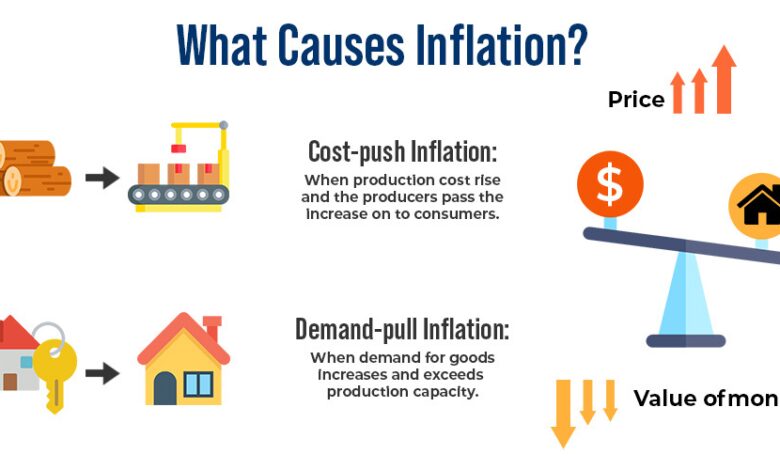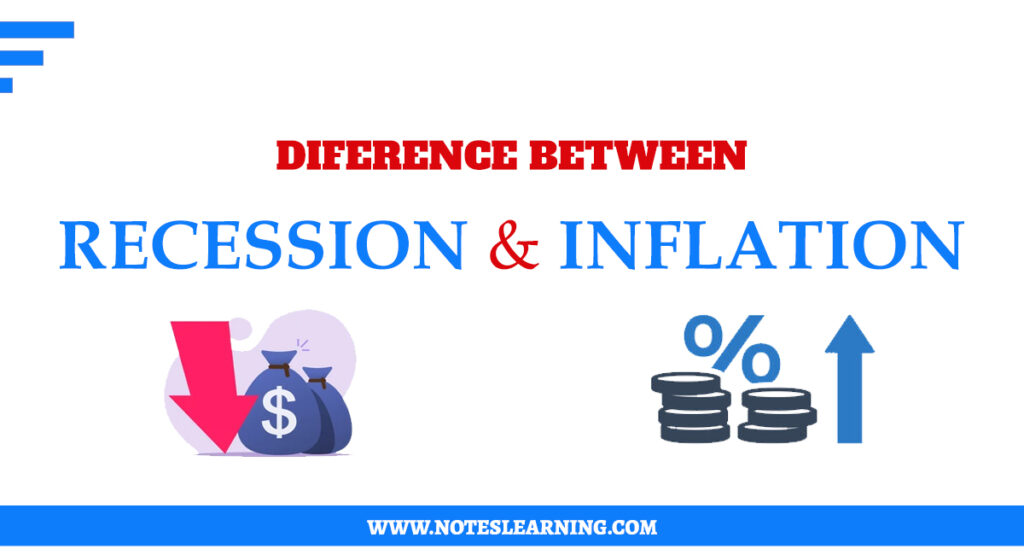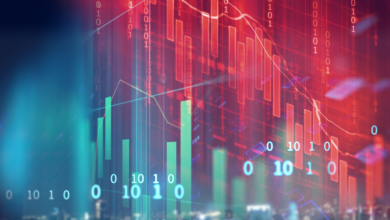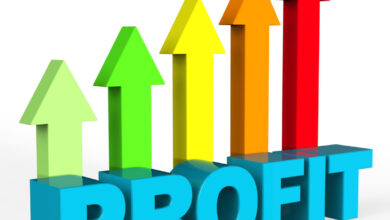
Why Inflation Fell Without a Recession
Why inflation fell without a recession is a question puzzling economists and everyday folks alike. It’s a twist in the usual economic narrative, a departure from the expected domino effect of inflation leading to recession. This post dives into the multifaceted reasons behind this unexpected economic calm, exploring the interplay of supply chain improvements, savvy monetary policy, shifting consumer behavior, and other key factors.
Get ready for a fascinating deep dive!
We’ll unpack the roles of the Federal Reserve’s interest rate hikes, the surprising resilience of the job market, and the impact of fluctuating energy prices and government fiscal policies. We’ll also analyze how changes in consumer spending habits played a crucial role in easing inflationary pressures. By examining these interwoven elements, we aim to provide a clearer understanding of this unusual economic phenomenon.
The Impact of Monetary Policy

The Federal Reserve’s (Fed) response to rising inflation in 2022 and 2023 involved a significant shift in monetary policy, primarily focused on increasing interest rates. This aggressive approach aimed to cool down the overheating economy and curb inflationary pressures. Understanding the impact of these actions is crucial to analyzing why inflation fell without triggering a recession.The Fed’s actions involved a series of interest rate hikes, increasing the federal funds rate – the target rate banks charge each other for overnight loans – from near zero to over 5% in a relatively short period.
This increase directly impacts borrowing costs for consumers and businesses, making loans more expensive and reducing demand for credit.
Interest Rate Hikes and Inflation Reduction
The correlation between interest rate hikes and subsequent inflation reduction is demonstrable, though not immediate. While precise causality is complex and debated among economists, data from the Bureau of Labor Statistics (BLS) and the Federal Reserve shows a clear trend. For example, the Consumer Price Index (CPI) inflation rate, which peaked at over 9% in June 2022, began a steady decline following the Fed’s initial rate increases later that year.
Economists are still puzzling over why inflation cooled without triggering a recession – a truly unexpected turn of events. It’s a fascinating contrast to other economic trends, like the way consumer culture has exploded, particularly how fashion conquered television, as detailed in this insightful article how fashion conquered television. The unexpected resilience of the job market, perhaps, offers a clue to this inflation mystery, and further research is needed to understand the full picture.
This decline continued into 2023, although the rate of decrease has slowed. While other factors undoubtedly contributed, the impact of tighter monetary policy is evident in the downward trajectory of inflation. A simple visual representation would show a graph with the federal funds rate on one axis and the CPI inflation rate on the other, clearly indicating a negative correlation following the rate increases.
The Lag Effect of Monetary Policy
Monetary policy operates with a significant lag. This means that the full impact of interest rate changes isn’t felt immediately in the economy. It can take several months, or even longer, for changes in interest rates to fully translate into changes in inflation and economic activity. This lag is due to the time it takes for businesses and consumers to adjust their spending and investment decisions in response to higher borrowing costs.
So, inflation’s dip without a recession? Economists are still scratching their heads, but one factor might be the unexpected strength of the global economy. It’s a strange contrast to the political climate, where, as this article points out, europeans are facing the prospect of Trump like a deer caught in headlights , creating uncertainty. Ultimately, though, the reasons behind the inflation drop remain complex and deserve further study.
For instance, businesses might continue with existing projects even with higher interest rates, while consumers may not immediately curtail spending. This delayed impact necessitates a proactive approach by the Fed, anticipating future inflationary pressures rather than simply reacting to current conditions.
Comparison of Monetary Policy Tools
| Monetary Policy Tool | Mechanism | Effectiveness in Controlling Inflation | Potential Side Effects |
|---|---|---|---|
| Federal Funds Rate Targeting | Influences short-term interest rates, affecting borrowing costs for banks and businesses. | Generally effective, but with a lag. | Can slow economic growth, potentially leading to recession if overdone. |
| Reserve Requirements | Changes the amount of reserves banks must hold, affecting their lending capacity. | Less frequently used, less direct impact on inflation. | Can disrupt the banking system if implemented abruptly. |
| Quantitative Easing/Tightening | Buying/selling government bonds to increase/decrease the money supply. | Can be effective in influencing long-term interest rates and inflation expectations. | Can lead to asset bubbles or unintended consequences if not carefully managed. |
| Forward Guidance | Communicating the central bank’s intentions and future policy plans. | Can influence market expectations and help to anchor inflation expectations. | May lose credibility if the central bank’s actions deviate significantly from its communicated plans. |
Changes in Consumer Demand and Spending Habits
The surprising decoupling of inflation reduction from a recession in many economies can be partly attributed to significant shifts in consumer demand and spending habits. As central banks tightened monetary policy, consumers responded in ways that dampened inflationary pressures, a phenomenon that warrants closer examination. This wasn’t simply a matter of reduced spending across the board, but rather a complex realignment of priorities and purchasing patterns.Consumers, facing higher prices and increased uncertainty, adjusted their spending behavior.
This wasn’t a uniform response, with different segments of the population reacting differently based on their financial situations and priorities. The shift involved a combination of reduced discretionary spending, increased focus on value, and changes in consumption patterns driven by both economic pressures and evolving societal trends.
So, inflation’s cooling without a recession? Economists are still scratching their heads, but one factor to consider is global food prices. The recent news that wheat climbs over 5 percent to a 2-week high as Russia suspends the Black Sea agreement highlights the fragility of the supply chain and how disruptions can impact inflation. This kind of volatility, affecting a staple food, certainly complicates the picture of why we haven’t seen a recession yet despite falling inflation.
Shifting Spending Priorities: From Discretionary to Essential Goods
The most noticeable change was a reduction in spending on discretionary goods and services. Consumers prioritized essential items like groceries and utilities, cutting back on non-essential purchases such as dining out, entertainment, and travel. This shift was particularly evident in sectors like the hospitality industry, which saw a decline in bookings and revenue. For example, the number of restaurant reservations dropped significantly in many regions, while the demand for home-cooked meals increased.
Similarly, the travel industry experienced a slowdown, with fewer people taking vacations and opting for staycations instead. This reduced demand in these sectors contributed to lower prices and slowed the overall inflation rate.
Price Sensitivity and Value-Seeking Behavior
Consumers became increasingly price-sensitive and actively sought value for their money. This led to a shift towards cheaper alternatives, store brands, and promotional offers. Supermarkets reported increased sales of their own-brand products, as consumers traded down from more expensive name brands. Similarly, discount retailers experienced a surge in sales as consumers looked for the best deals. This change in behavior demonstrates a clear response to rising prices and a proactive attempt to manage household budgets.
Factors Influencing Reduced Demand, Why inflation fell without a recession
Several factors contributed to the overall reduction in consumer demand. These include:
- Higher Interest Rates: Increased borrowing costs made it more expensive for consumers to finance purchases, leading to reduced spending on big-ticket items like cars and houses.
- Reduced Consumer Confidence: Uncertainty about the economic outlook and concerns about job security led to a decrease in consumer confidence, resulting in less willingness to spend.
- Increased Savings Rates: Some consumers chose to increase their savings rates in response to economic uncertainty, further reducing their spending.
- Government Policies: In some countries, government policies such as targeted subsidies or tax credits played a role in softening the impact of inflation on certain vulnerable groups.
Key Changes in Consumer Spending
- Reduced spending on discretionary goods and services.
- Increased focus on essential goods and value-oriented purchases.
- Shift towards cheaper alternatives and store brands.
- Increased price sensitivity and bargain hunting.
- Higher savings rates among some consumers.
The Influence of Energy Prices

Energy prices play a significant role in overall inflation, acting as a crucial driver of both producer and consumer price indices. Fluctuations in energy costs, whether due to geopolitical events, supply chain disruptions, or changes in demand, ripple through the economy, impacting transportation, manufacturing, and household budgets. Understanding this influence is key to comprehending broader inflationary trends.Energy costs directly influence the price of goods and services.
Higher energy prices increase production costs for businesses, leading them to raise prices to maintain profit margins. This cost-push inflation affects everything from food production and transportation to manufacturing and heating homes. Conversely, lower energy prices can contribute to disinflation or even deflation, as production costs fall and businesses pass on the savings to consumers.
The Correlation Between Energy Costs and Inflation Rate
Numerous studies and datasets demonstrate a strong correlation between energy prices and inflation. For example, the Bureau of Labor Statistics (BLS) in the United States regularly publishes data showing the contribution of energy to the Consumer Price Index (CPI). Periods of sharp increases in oil prices, such as those seen in the early 2000s and 2008, are often followed by significant spikes in overall inflation.
Conversely, periods of low oil prices, such as those experienced in 2014-2016, often coincide with lower inflation rates. Analyzing historical CPI data alongside energy price indices reveals a clear positive correlation: when energy prices rise, inflation tends to rise; when energy prices fall, inflation tends to fall. This relationship isn’t always perfectly linear, as other factors influence inflation, but the impact of energy is undeniable.
For instance, comparing the CPI in the US during the oil price shocks of the 1970s with periods of relatively stable oil prices clearly illustrates this relationship.
The Impact of Alternative Energy Sources on Energy Prices and Inflation
The increasing adoption of alternative energy sources, such as solar, wind, and geothermal power, has the potential to moderate energy price volatility and, consequently, inflation. The inherent variability of fossil fuel prices, often subject to geopolitical instability and supply constraints, is lessened by the introduction of more stable, domestically sourced renewable energy. While the initial investment in renewable energy infrastructure is substantial, the long-term cost of generating electricity from renewable sources tends to be lower and more predictable than that of fossil fuels.
This reduced price volatility can lead to greater price stability across various sectors, contributing to lower and more predictable inflation rates. However, the transition to renewable energy is not instantaneous, and the impact on inflation is a gradual process dependent on the rate of adoption and technological advancements. Countries with significant investments in renewable energy infrastructure, such as Germany and Denmark, have shown a relative degree of insulation from some of the recent volatility in global fossil fuel prices.
Inflation Rates in Countries with Varying Energy Price Dynamics
A comparison of inflation rates across countries with different energy price dynamics reveals further insights. Countries heavily reliant on imported fossil fuels, particularly those with limited domestic energy resources, tend to experience greater inflation volatility due to fluctuations in global energy markets. For instance, countries in Europe, especially those with higher reliance on Russian natural gas before the 2022 energy crisis, experienced significant inflationary pressures as a result of the subsequent price increases.
In contrast, countries with diverse energy sources and significant domestic production, such as the United States or Saudi Arabia, generally experience less dramatic inflation swings. This comparison underscores the importance of energy independence and diversification in mitigating inflationary pressures. A detailed analysis of inflation rates and energy price indices across various nations over several years would clearly illustrate this point.
The Unexpected Resilience of the Labor Market: Why Inflation Fell Without A Recession

The surprisingly robust labor market throughout the period of inflation reduction stands as a significant anomaly, defying historical patterns and challenging conventional economic wisdom. While inflation typically leads to job losses and economic slowdown, the recent experience shows a different narrative, where strong employment figures coexisted with decreasing inflation rates. This resilience warrants close examination to understand its contribution to the overall economic picture.The relationship between employment rates and inflation is complex and not always directly proportional.
However, a strong labor market can exert a moderating influence on inflation through several key mechanisms. A tight labor market, characterized by low unemployment and high labor demand, gives workers increased bargaining power, allowing them to negotiate higher wages. While this might seem inflationary at first glance (higher wages leading to higher prices), the effect can be nuanced.
For instance, if wage increases are productivity-driven, meaning they reflect improved worker output, the increase in prices might be offset by the increase in output.
Wage Growth and Inflationary Pressures
The recent period saw robust wage growth, a trend often associated with inflationary pressures. However, the impact wasn’t as severe as predicted. While wages did rise, the increase wasn’t so dramatic as to trigger a significant wage-price spiral. Data from the Bureau of Labor Statistics (BLS) showed a steady increase in average hourly earnings, but this growth remained relatively contained compared to the inflation rate itself.
This suggests that productivity gains and other factors helped to offset the inflationary impact of rising wages. For example, some sectors saw increased productivity due to technological advancements or improved efficiency, which helped to absorb some of the increased labor costs without a proportional increase in prices. Furthermore, increased participation in the labor force helped to ease labor shortages and reduce upward pressure on wages.
Comparison with Previous Periods
Comparing the current situation to previous periods of high inflation, such as the 1970s, reveals a stark contrast. The stagflation of the 1970s was characterized by both high inflation and high unemployment – a combination absent in the recent period. During that era, a weaker labor market amplified inflationary pressures, as workers lacked the bargaining power to resist price increases.
The current strong labor market, in contrast, has provided a buffer against excessive inflation, indicating a more nuanced relationship between these factors than historically observed. The absence of a wage-price spiral, despite robust wage growth, highlights the importance of productivity gains and other mitigating factors in the current economic environment. The relative strength of the labor market also suggests a different underlying dynamic compared to past inflationary episodes.
Mechanisms Tempering Inflation
Several mechanisms contributed to the labor market’s ability to temper inflation. Firstly, increased labor force participation eased labor shortages, reducing upward pressure on wages. Secondly, productivity gains, driven by technological advancements and improved efficiency, allowed for wage increases without proportionate price increases. Thirdly, supply chain improvements and easing of energy prices also helped to mitigate inflationary pressures.
Finally, the Federal Reserve’s monetary policy, while contributing to some slowdown, also played a role in moderating overall economic growth and preventing runaway inflation. The interplay of these factors created a more complex economic environment than the simplistic model of high inflation necessarily equating to high unemployment.
So, why did inflation fall without triggering a recession? The answer, as we’ve seen, isn’t a simple one. It’s a complex interplay of factors – from supply chain recovery and smart monetary policy to shifting consumer behavior and the surprising strength of the labor market. While the future remains uncertain, understanding the elements that contributed to this unique economic scenario offers valuable insight into how economies adapt and evolve in the face of unexpected challenges.
It’s a story of resilience, adaptation, and the fascinating unpredictability of economic forces.





